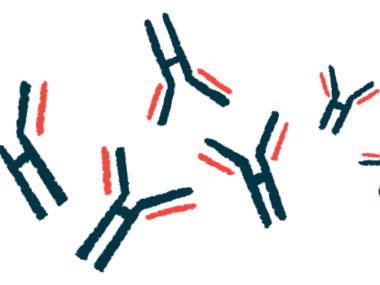Intractable primary CAD managed successfully with splenectomy
There are few reports of surgery to remove the spleen with the disease
Written by |

Splenectomy, or the surgical removal of the spleen, significantly reduced unmanageable red blood cell destruction in a man with primary cold agglutinin disease (CAD), a study showed.
While this approach is usually considered to be ineffective in CAD patients, this case report adds to other studies where CAD was successfully treated with a splenectomy.
Further studies are needed to confirm the therapeutic benefit of this approach and to identify potential response markers in this patient population, the researchers wrote in the study, “Successful Management of Refractory Autoimmune Hemolytic Anemia with Cold Agglutinin Disease with Splenectomy: A Case Report with Review of Literature,” which was published in the Kobe Journal of Medical Sciences.
Autoimmune hemolytic anemia (AIHA) is a group of rare autoimmune diseases wherein a person’s immune system produces self-reactive antibodies that attack and destroy red blood cells, known as hemolysis.
A loss of red blood cells leads to anemia, depriving tissues of oxygen, which is carried by hemoglobin, a protein in these cells. The condition can cause fatigue and pain.
The primary goal of treating AIHA is to reduce hemolysis and increase red blood cell production to make sure hemoglobin levels are normalized.
AIHA can be classified as CAD, warm AIHA, and mixed AIHA, depending on whether the antibodies bind more easily to red blood cells at lower or higher temperatures. The mixed type has both antibody types.
Self-reactive antibodies working at lower temperatures, called cold agglutinins, are mostly of an antibody form called IgM. Those reacting at higher temperatures are most frequently of the antibody form called IgG.
CAD is classified into two types — primary and secondary. The causes of the primary type are unknown, but the secondary type is triggered by an underlying disease like another autoimmune disorder, an infection, or cancers of antibody-producing B-cells, including lymphoma or leukemia.
“In general, temperature control and warming are the first treatment choices for CAD,” the researchers wrote, adding that “rituximab or corticosteroids are effective in severe or intractable cases.” Rituximab is a B-cell depleting therapy sold as Rituxan in the U.S and as MabThera in Europe. Biosimilars are available.
The destruction of self-reactive antibody-bound red blood cells occurs mainly in the liver typically when it’s associated with the action of IgM and in the spleen (where B-cells mature) when it’s linked to IgG. With AIHA progression and further hemolysis, these organs may get larger.
As such, while splenectomy is an effective treatment for warm AIHA, “reports of cases in which splenectomy improved hemolytic anemia in CAD are few,” the researchers wrote. This is likely associated with the fact that “cases of CAD with … hemolysis in the spleen due to the action of IgG are rarely reported.”
A diagnosis of primary CAD, then mixed AIHA
A research team at the Kobe University Graduate School of Medicine, Japan, reported a case where refractory hemolytic anemia due to primary CAD was successfully controlled with a splenectomy.
The patient, a 60-year-old man, consulted a local physician due to fatigue. His examination revealed hemolytic anemia and jaundice, the yellowing of the skin and eyes caused by high levels of bilirubin, a yellowish substance formed amid the breakdown of red blood cells.
A CT scan of the man’s abdomen showed mild spleen enlargement, or splenomegaly.
He also had high levels of cold agglutinins, and “exacerbation of hemolysis due to cold exposure was observed,” the researchers wrote. He tested negative for IgG antibodies.
While there were some signs of a blood cancer, they were not conclusive and no other underlying diseases were clearly identified. The man was diagnosed with primary CAD.
His anemia — for which he was treated with warming and weekly blood transfusion — worsened during the first winter and resolved in the first summer. His hemoglobin levels didn’t improve and his splenomegaly got worse in the second summer after his diagnosis, however.
The man was referred to researchers, where he had a splenectomy to exclude a malignant lymphoma diagnosis and, therefore, a secondary cause of CAD, and reduce his intractable hemolytic anemia. The researchers noted the man’s “aunt had a history of malignant lymphoma.”
The man’s spleen showed no evidence of cancer under examination, confirming the primary CAD diagnosis.
After the splenectomy, he developed temporary complications in his intestine and pancreas, which improved with noninvasive therapy. He left the hospital 17 days after the surgery.
During treatment, he tested positive for IgG antibodies, and “he was diagnosed with mixed-type AIHA,” the researchers wrote. “In this case, … hemolysis may have occurred because of IgG rather than IgM, and massive splenomegaly was likely caused by hemolysis in the spleen.”
A year and a half after the procedure, the man’s hemolytic anemia gradually reduced, hemoglobin levels increased, and his bilirubin levels decreased. No blood transfusion was needed since the surgery.
The researchers said “predicting the effect of splenectomy [before surgery] may have been possible by measuring the Ig class levels and the presence of massive splenomegaly in the case of CAD.” They said the case suggests a splenectomy may be indicated for CAD patients with refractory hemolytic anemia, although more studies to evaluate its effects are required since there are few “reports of successful splenectomy in patients with CAD.”






